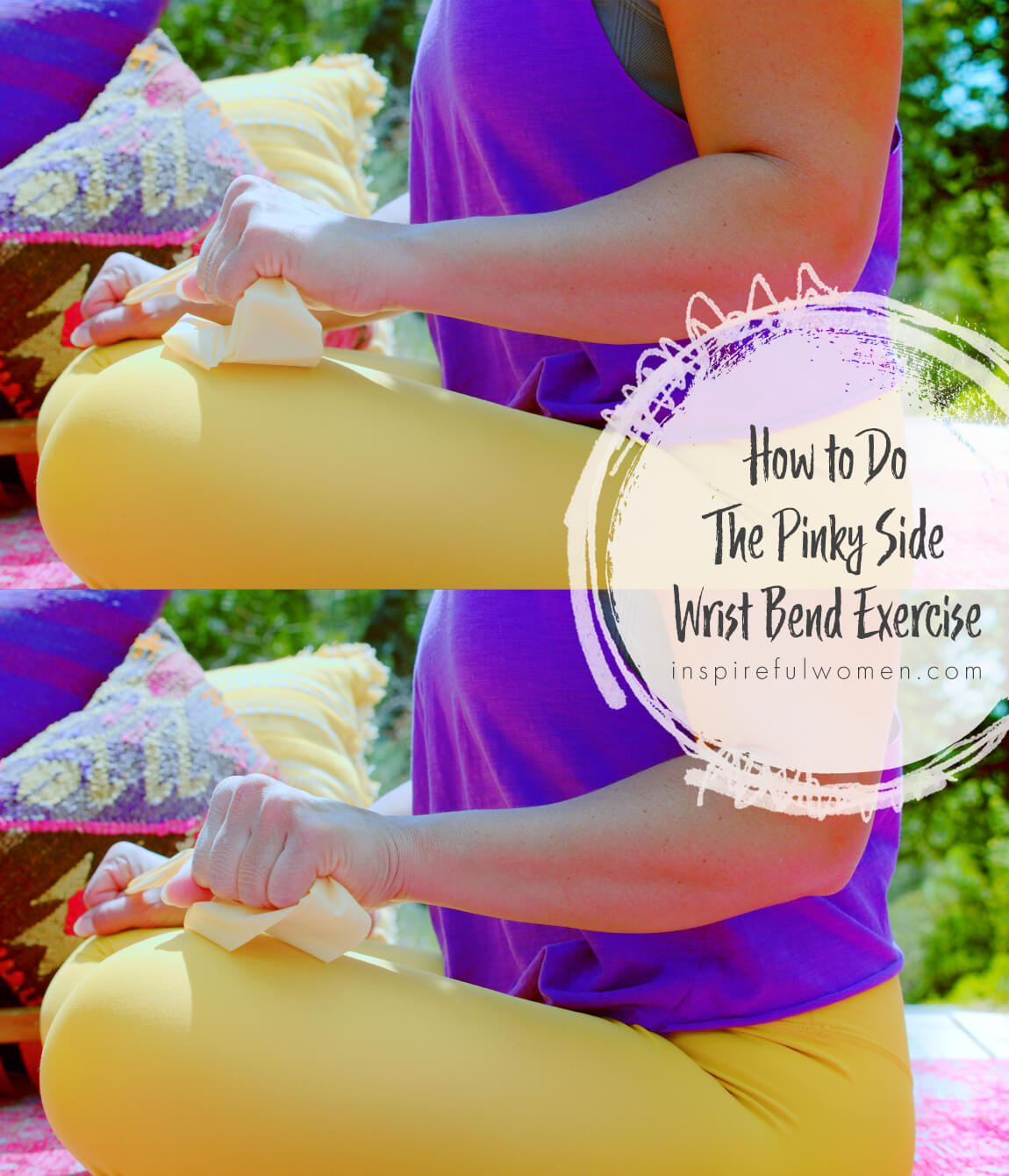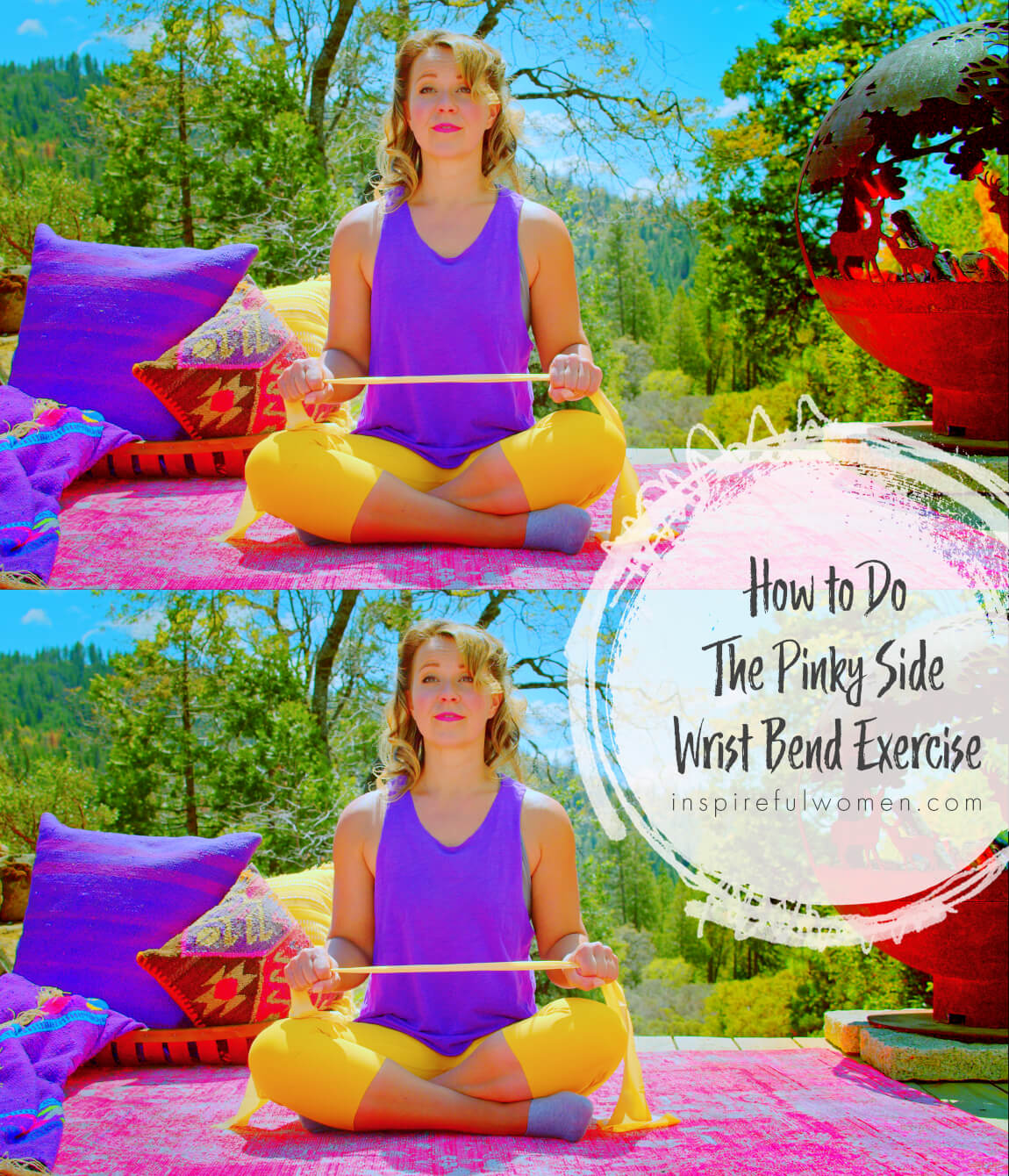Band Wrist Ulnar Deviation - Pinky Side
How to Do the Wrist Bending towards Little Finger w/ Band | In-Depth Guide [VISUAL LEARNERS] Beginner
Proper Form & Common Mistakes | Home Resistance Training
WHAT DO YOU WANT TO SEE?
QUICK DEMO
QUICK DEMO
MUSCLES THIS WORKS
MUSCLES
MAIN MUSCLES WORKED IN the Band Pinky Side Wrist Bend
MANY WRIST MUSCLES - SEE BELOW
Flexor carpi ulnaris, extensor carpi radialis longus and brevis, extensor carpi ulnaris and palmaris longus.
OTHER MUSCLES WORKED:
- Abductor Pollicis Longus
- Extensor Pollicis Longus and Brevis
- Flexor Digitorum Profundus and Superficialis
- Palmar Interossei
- Flexor Digiti Minimi Brevis
WHAT WE'RE DOING TODAY
WHAT & WHY
BENEFITS OF TRAINING THE Wrist muscles
WHAT
WHAT WE'RE DOING TODAY
Other names for this exercise: Wrist Ulnar Deviation (Little Finger Side) with Band & Side Bending Towards Little Finger
These exercises target the forearm muscles that move the hand from side to side. Movement towards the thumb side of the hand is called radial deviation and toward the little finger side is called ulnar deviation. The exercises to target these muscles are very straightforward and easy to do. The forearm is held still while the wrist moves up or down. The muscles used for this are pretty small muscles so lighter resistance is used.
Most upper body exercises will work all of the muscles that cross the wrist joint - that is because you usually hold your wrist still while you move through the shoulder or elbow. Holding the wrist still works the muscles isometrically - no change in the position of the wrist but the muscles are working to stabilize the wrist. Muscles are strongest when they don’t have to move a joint - when they just hold it still, and when a joint is held still, most of the muscles that cross the joint will work together. When you move the joint, only the muscles of the joint responsible for that motion will be working. It is important to include exercises that work the wrist through its range of motion so that all of the muscles are strengthened for their specific function.
WHY BOTHER DOING IT?
WHY
WHY DO WE EVEN CARE?
The muscles of the upper body are basically servants for the hand. The job of the upper body is to move the hand to where it needs to be and to hold the wrist still so the hand can do its job. The hands work all day long, in many different positions doing many different things. If we could not use our hands, the arms would be of little use. When you think of it that way, it doesn’t make a lot of sense to strengthen the muscles of the shoulder and elbow and not to take a little time to strengthen the muscles that cross the wrist. In fact, it can create an imbalance that can lead to injury.
One of the most important jobs of the wrist muscles is to position the hand in the position where the muscles of the hand are the strongest. The muscle’s strength is dependent on how long the muscle is - so changing the position of the hand just slightly can affect the strength of the muscles of the hand. The brain is great at figuring this out - you will automatically position the wrist in the most advantageous position for the muscles of your hand. Next time you open a jar, check out the position of your hand. Chances are pretty good that the wrist will be slightly bent back - that is the position where your grip is the strongest.
That is all great if the wrist muscles are strong enough to the hand in that position. But with age we tend to lose forearm strength and common daily tasks like opening jars, turning door knobs and using can openers can become more difficult. Keeping the muscles of the forearm strong helps to prevent this from occurring. Strengthening the muscles that move and stabilize the wrist and hand will improve your hand control for everyday tasks. Interestingly, grip strength is considered a pretty reliable predictor of overall health, strength, and cardiovascular disease, it has been used as an indicator of longevity and better grip strength has even been correlated with improved likelihood of surviving cancer. Strengthening the muscles that cross the wrist can help to improve grip strength.
EVERYDAY LIFE
EVERYDAY LIFE &
MUSCLE FUNCTION
HOW WE USE OUR WRIST MUSCLES IN EVERYDAY LIFE
The main function of the wrist is to move and stabilize the hand during fine movements. The wrist positions the muscles that control the fingers in the best position (best length and line of pull) to do their job. This allows for very controlled fine movements of the fingers.
1. BENDING THE WRIST TO THE LITTLE FINGER SIDE (ULNAR DEVIATION) - LITTLE FINGER MOVES CLOSER TO THE SIDE OF THE FOREARM
- Brushing crumbs away
- Hitting the ENTER key on the keyboard
2. BENDING THE WRIST TO THE THUMB SIDE (RADIAL DEVIATION) - THUMB GETS CLOSER TO THE SIDE OF THE FOREARM
- Pulling a tissue out of the box
- Hitting the B or V on the keyboard
3. BOTH ULNAR AND RADIAL DEVIATION
- Hammering
- Twisting a lid off of a jar
- Turning a faucet
- Using a can opener
- Waving
4. THE MUSCLES OF THE FOREARM (WRIST AND FOREARM) WORK TOGETHER TO MOVE AND STABILIZE THE HAND IN THE MANY DIFFERENT POSITION THAT WE USE IT IN DURING THE DAY
- Stirring
- Knitting or crocheting
- Using a spatula
- Writing
- Using a computer
- Using a phone
- Dressing - buttons, zippers, gloves, tying shoes, pulling up pants, pulling on shirts
- Eating, drinking
- Washing dishes
- Folding laundry
STARTING POINTERS
Starting Pointers
This variation of the side bending towards the little finger uses a resistance band and is done in a seated position. The non-working hand is used to anchor the band. The exercise is done with the elbow bent - this will put the muscles in a position where they will be a little stronger than when the elbow is straight (not too long and not too short). It is a good idea to work the wrist muscles in different positions because that is the way they are used in daily life.
The exercise works the muscles that move hand down towards the side of the little finger. The muscles attach just above the elbow joint on the both sides of the upper arm. Using a band lets you adjust the resistance as needed - to make the exercise doable but challenging. The range of the movement is small.
HOW TO DO THE EXERCISE
LOOKS
HOW the Band Pinky Side Wrist Bend SHAPE OUR BODY
Toned forearms, balanced upper and lower arm.
PROPER FORM
PROPER FORM: Band Pinky Side Wrist Bend
EQUIPMENT, SETS & REPS
EQUIPMENT
Main set (3: Light/Med/Heavy)
X-Heavy Band (I recommend getting this too if you plan to use resistance bands frequently).
SUGGESTED STARTING WEIGHT FOR WOMEN:
Moderate resistance bands
SETS & REPS:
1-2 sets of 8 - 10 reps (if you have a history of elbow or wrist pain, start with one set).
PACE:
Moderate up (concentric) and slow return (eccentric) - controlled
BODY POSITION
BODY POSITION FOR THE Band Pinky Side Wrist Bend
BAND: Anchor one end of the band in your non-working hand and hold the other end of the band in your working hand.
BODY STANCE: Sitting with a neutral spine. Shoulder blades back and down, sternum lifted.
ARM: Upper arms stabilized by the sides of your torso, elbows bent so that your forearms are parallel to the floor.
HAND: Pronated grip on the band, palm facing down - band enters your hand from your thumb side and crosses your palm. Wrist neutral. The band should have tension on it in the starting position.
HOW TO DO
HOW TO DO the Band Pinky Side Wrist Bend Exercise
CUE: Try to move very smoothly and with control - jerky movements mean your muscle is weak.
Bend your wrist towards the side of your little finger against the resistance of the band.
Slowly return to neutral.
Repeat for the desired number of reps.




COMMON MISTAKES
COMMON MISTAKES
WHAT TO AVOID WITH THE Band Pinky Side Wrist Bend
KEY TIP:
Guess what? Good news! Many avoids are the same for most movements. Once you learn the basics, there's really only a few extra avoids for each individual movement.
1. Avoid Using too much resistance
AVOID: Avoid using too much weight.
WHY NOT?
- The muscles of the forearm are smaller muscles.
- The goal of the exercise is to wake the muscles up and improve the health of the muscle to prevent injury.
WHAT TO DO:
- If you are working the larger muscles of the upper arm, it is good to work the forearm so that you do not create a muscle imbalance that could lead to elbow or wrist pain.
2. Avoid pushing too far
AVOID: Avoid trying to push the movement as far as possible.
WHY NOT?
- There are 8 small bones that make up the wrist.
- The bones are attached to one another with many, many ligaments - trying to push the wrist into more flexion or extension may irritate these joints unnecessarily.
WHAT TO DO:
- Just move the wrist as far as it goes without any pushing - the movement should feel free and easy.
SCIENCY STUFF
SCIENCY STUFF
SPIFFILICIOUS FACTS ABOUT MUSCLES & MOVES
Note: The names of the muscles of the forearm make it very easy to know what the muscle does. Carpi refers to the wrist - the carpal bones are 8 small bones that form the wrist. Ulnaris means that the muscle lies on the side of the ulna so it can move the hand to the side of the ulna (ulnar deviation or adduction); and radialis means the muscle is on the side of the radius (radial deviation or abduction), so it can pull the hand to the side of the radius. The palmaris muscle attaches to the fascia on the palm of the hand.
Two bones make up the forearm - the ulna and the radius. The bones are long - running from the elbow joint to the wrist, and they lie next to each other. The wrist can move side to side. Movement that brings the small finger down towards the forearm is called ulnar deviation or adduction. This action is carried out primarily by the flexor carpi ulnaris and extensor carpi ulnaris.
Moving the thumb towards the side of the forearm is called radial deviation or abduction, the primary muscles responsible for this are the extensor radialis longus and the flexor carpi radialis - abductor pollicis longus, extensor pollicis longus and brevis can also help.
ALLLL MUSCLES & WHEN
ALL MUSCLES WORKING & WHEN DURING THE Band Pinky Side Wrist Bend
The muscles of the hand work to hold the band: flexor digitorum profundus and superficialis, palmar interossei, and flexor digiti minimi brevis.
The Flexor carpi ulnaris and extensor carpi ulnaris work concentrically to bend the wrist towards the side of the little finger.
The same muscles work eccentrically as the hand returns to the starting position.
PIN IT FOR LATER!


